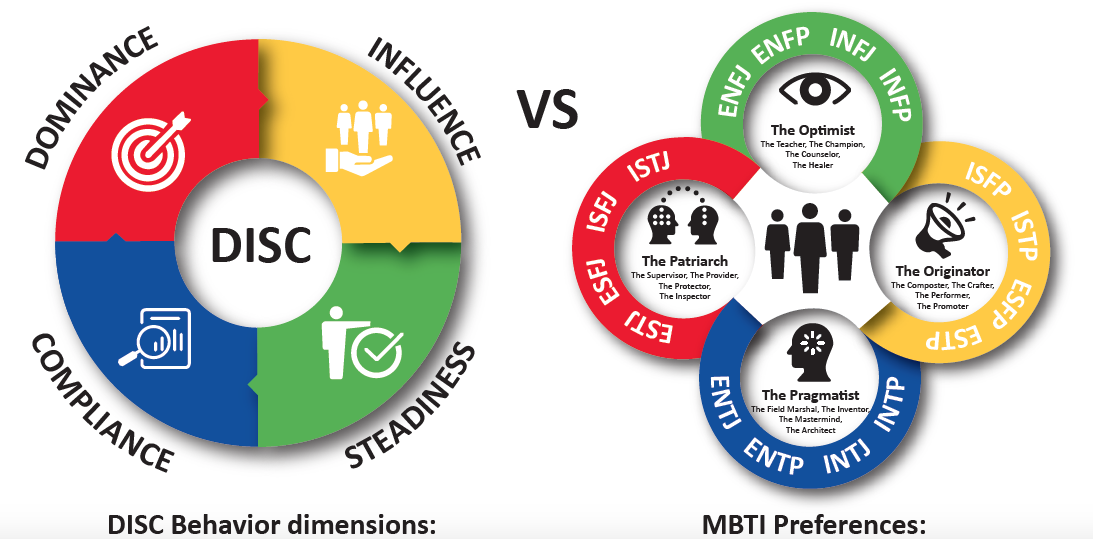The Difference Between DISC and MBTI

What’s the difference? Do we need to use both?
Straight talk about each instrument
Both the DISC instrument and the MBTI® (Myers-Briggs Type Indicator) are widely used and accepted in thousands of organisations around the world.
Since DISC has grown at an enormous pace over the past two decades, the two instruments may be tied for the number of instruments sold annually. Since DISC instruments are provided through at least a dozen vendors, the specific numbers of instruments used are more difficult to track.
Some type of four-dimensional model of behaviour has been in existence since about 400 BC with Empodocles (air, earth, fire, and water), Hippocrates (sanguine, choleric, phlegmatic, and melancholic), Galen in 170 AD, Carl Jung in 1921 (thinking, feeling, sensing, and intuiting), and William Marston in 1928 (Dominance, Inducement, Steadiness, and Compliance).
Currently there are over a dozen DISC-type models in the marketplace, and since the DISC concept is in the public domain, other iterations may continue to emerge.
What each of the DISC models have in common is that they attempt to describe observable behaviour, that is, HOW someone does what they do.
If you are a salesperson, how do you sell? Do you sell as a high or low D, I, S, or C, or most likely, a combination thereof? If you are a manager, how do you manage? As a D, I, S, or C, or a combination?
DISC Behaviour dimensions:
Dominance: Approach to Problems
High: New problems solved quickly, assertively, actively. Gets to the bottom-line quickly.
Low: New problems solved in a controlled, organised way. Thinks before acting.
Influence: Approach to People
High: Meets new people in an outgoing, talkative manner. Gregarious and emotional.
Low: Meets new people in a quiet, controlled, reserved manner. Emotionally controlled.
Steadiness: Approach to Work Pace
High: Prefers a controlled, deliberate work environment. Values security of situation.
Low: Prefers a flexible, dynamic, changeable environment. Values freedom of expression.
Compliance: Approach to Procedures
High: Likes things done ‘the right way,’ and says, “Rules are made to be followed.”
Low: Works independently of the procedures and says, “Rules are made to be bent or broken.”
MBTI Preferences:
Introversion- Extraversion:
Orientation to the world around us: Outer world, with others, or inner world with self.
Sensing- Intuition:
Ways of perceiving or gathering information: Real and actual, or looking at patterns and meanings.
Thinking- Feeling:
Decision-making based on careful analysis, or consideration of the impact on others.
Judging- Perceiving:
Dealing with outer world in orderly, planned manner; or in a spontaneous, flexible manner.
If you’d like to discuss facilitating a DISC or MBTI workshop with your staff, please call us today for a confidential no obligation discovery session.
Phone: 1300 833 574
www.kona.com.au
The information provided above is the opinion of the author, Russell J. Watson, Ed.D. There may be other researchers who may disagree. For more information, contact your TTI distributor.
Style Insights® is a Registered Trademark of TTI Performance Systems, Ltd. MBTI® is a Registered Trademark of Consulting Psychologists Press.





































































